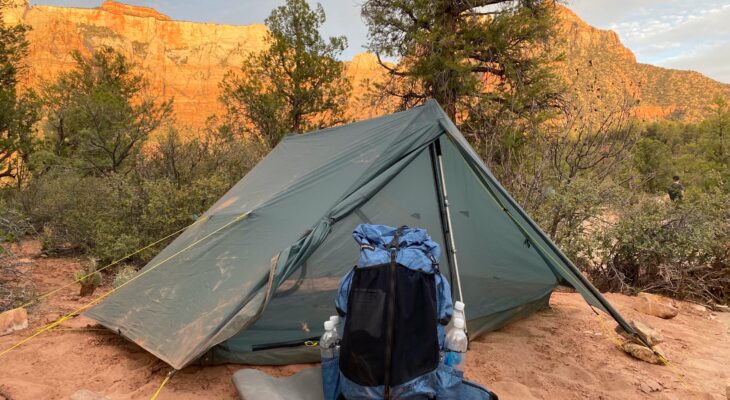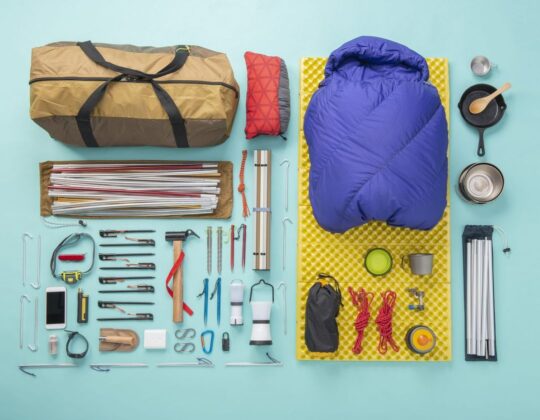Selecting the right tent is a crucial decision that significantly impacts your camping experience. Whether you’re a seasoned outdoor enthusiast or a first-time camper, finding the perfect shelter involves considering various factors, from tent types and sizes to features and weather resistance. In this guide, we’ll walk you through the essential considerations to help you make an informed decision and ensure that your camping adventure is comfortable, secure, and tailored to your specific needs.
1. Tent Types:
- Dome Tents:
- Pros: Dome tents are easy to set up, provide good stability, and are resistant to wind.
- Cons: Limited headroom compared to other tent types.
- Cabin Tents:
- Pros: Cabin tents offer spacious interiors with nearly vertical walls, providing ample headroom.
- Cons: They can be bulkier and less wind-resistant than other types.
- Tunnel Tents:
- Pros: Tunnel tents are lightweight and offer a good balance between space and wind resistance.
- Cons: Setup can be more complex, and they may not provide as much headroom.
- Geodesic Tents:
- Pros: Geodesic tents are designed for stability and can withstand harsh weather conditions.
- Cons: They can be heavier and more complex to set up.
- A-Frame Tents:
- Pros: A-frame tents are simple and lightweight, with good stability.
- Cons: Limited headroom and less efficient use of space.
2. Tent Size and Capacity:
- Capacity:
- Consideration: Determine the number of people the tent needs to accommodate.
- Tip: Choose a tent with a capacity one size larger than the number of campers for extra space and comfort.
- Interior Space:
- Consideration: Look for tents with sufficient interior space, allowing room for sleeping bags, gear, and maneuverability.
- Tip: Check the tent’s floor dimensions and peak height to assess livability.
3. Seasonal Suitability:
- 3-Season Tents:
- Usage: Ideal for spring, summer, and fall camping.
- Features: Provide good ventilation but may not withstand extreme weather conditions.
- 4-Season Tents:
- Usage: Designed for year-round camping, including winter.
- Features: Offer enhanced insulation, weather resistance, and snow-load capacity.
4. Tent Weight and Portability:
- Backpacking Tents:
- Weight: Lightweight and designed for easy portability.
- Features: Compact design, minimalistic features, and efficient use of materials.
- Car Camping Tents:
- Weight: Heavier but often more spacious.
- Features: Can include additional amenities and larger living spaces.
5. Ease of Setup:
- Freestanding Tents:
- Setup: Easier to set up since they don’t rely on stakes for structure.
- Flexibility: Can be moved around the campsite after setup.
- Non-Freestanding Tents:
- Setup: Require stakes and guylines for proper setup.
- Stability: Tend to be more stable in challenging weather conditions.
6. Ventilation and Breathability:
- Mesh Panels:
- Advantages: Provide effective ventilation, reducing condensation inside the tent.
- Consideration: Ensure the tent has sufficient mesh panels, especially in warmer conditions.
7. Durability and Weather Resistance:
- Material Quality:
- Consideration: Evaluate the quality of tent materials, including the fabric, zippers, and seams.
- Tip: Look for tents with waterproof coatings and reinforced stress points.
- Weather Resistance:
- Consideration: Assess the tent’s ability to withstand wind, rain, and other weather conditions.
- Tip: Check the tent’s waterproof rating and wind resistance capabilities.
8. Additional Features:
- Vestibules and Awnings:
- Advantages: Provide extra storage space and shelter from rain or sun.
- Consideration: Look for tents with vestibules or awnings for added functionality.
- Gear Lofts and Pockets:
- Advantages: Offer storage solutions for small items, keeping the tent organized.
- Consideration: Evaluate the number and placement of gear lofts and pockets.
- Footprints:
- Advantages: Protect the tent’s floor from abrasion, moisture, and punctures.
- Consideration: Some tents come with custom footprints, while others require a separate purchase.
Conclusion:
Choosing the right tent for your camping needs involves a thoughtful consideration of various factors, from tent types and sizes to features and weather resistance. By assessing your preferences, camping style, and expected conditions, you can make an informed decision that enhances your outdoor experience. Whether you’re embarking on a backcountry adventure, car camping with family, or seeking a shelter for all seasons, the perfect tent awaits to be your home under the stars. With the right tent, you can confidently embrace the beauty of the outdoors and create memorable camping moments that last a lifetime.











